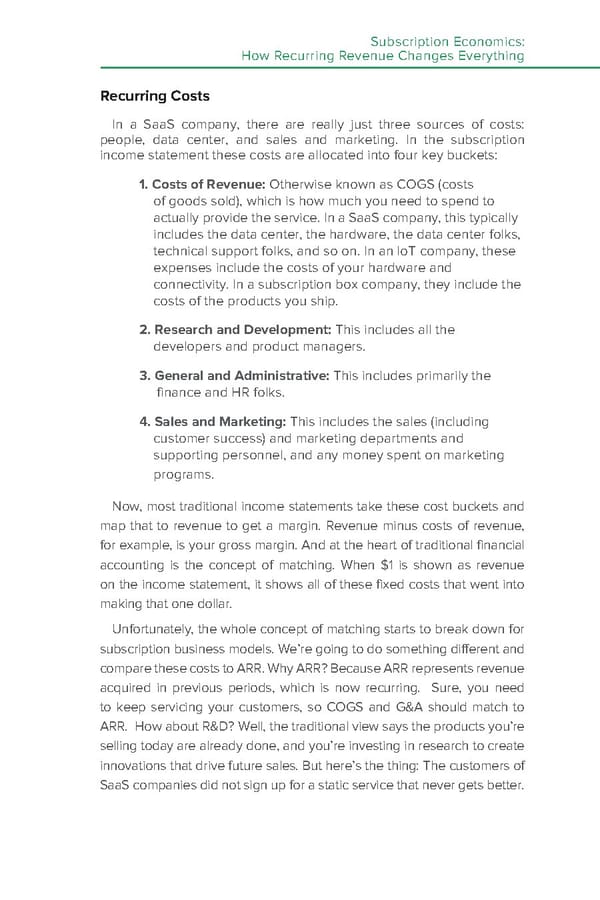Chapter 1 Subscription Economics: How Recurring Revenue Changes Everything Recurring Costs In a SaaS company, there are really just three sources of costs: people, data center, and sales and marketing. In the subscription income statement these costs are allocated into four key buckets: 1. Costs of Revenue: Otherwise known as COGS (costs of goods sold), which is how much you need to spend to actually provide the service. In a SaaS company, this typically includes the data center, the hardware, the data center folks, technical support folks, and so on. In an IoT company, these expenses include the costs of your hardware and connectivity. In a subscription box company, they include the costs of the products you ship. 2. Research and Development: This includes all the developers and product managers. 3. General and Administrative: This includes primarily the finance and HR folks. 4. Sales and Marketing: This includes the sales (including customer success) and marketing departments and supporting personnel, and any money spent on marketing programs. Now, most traditional income statements take these cost buckets and map that to revenue to get a margin. Revenue minus costs of revenue, for example, is your gross margin. And at the heart of traditional financial accounting is the concept of matching. When $1 is shown as revenue on the income statement, it shows all of these fixed costs that went into making that one dollar. Unfortunately, the whole concept of matching starts to break down for subscription business models. We’re going to do something different and compare these costs to ARR. Why ARR? Because ARR represents revenue acquired in previous periods, which is now recurring. Sure, you need to keep servicing your customers, so COGS and G&A should match to ARR. How about R&D? Well, the traditional view says the products you’re selling today are already done, and you’re investing in research to create innovations that drive future sales. But here’s the thing: The customers of SaaS companies did not sign up for a static service that never gets better.
 Subscription Economics Page 10 Page 12
Subscription Economics Page 10 Page 12